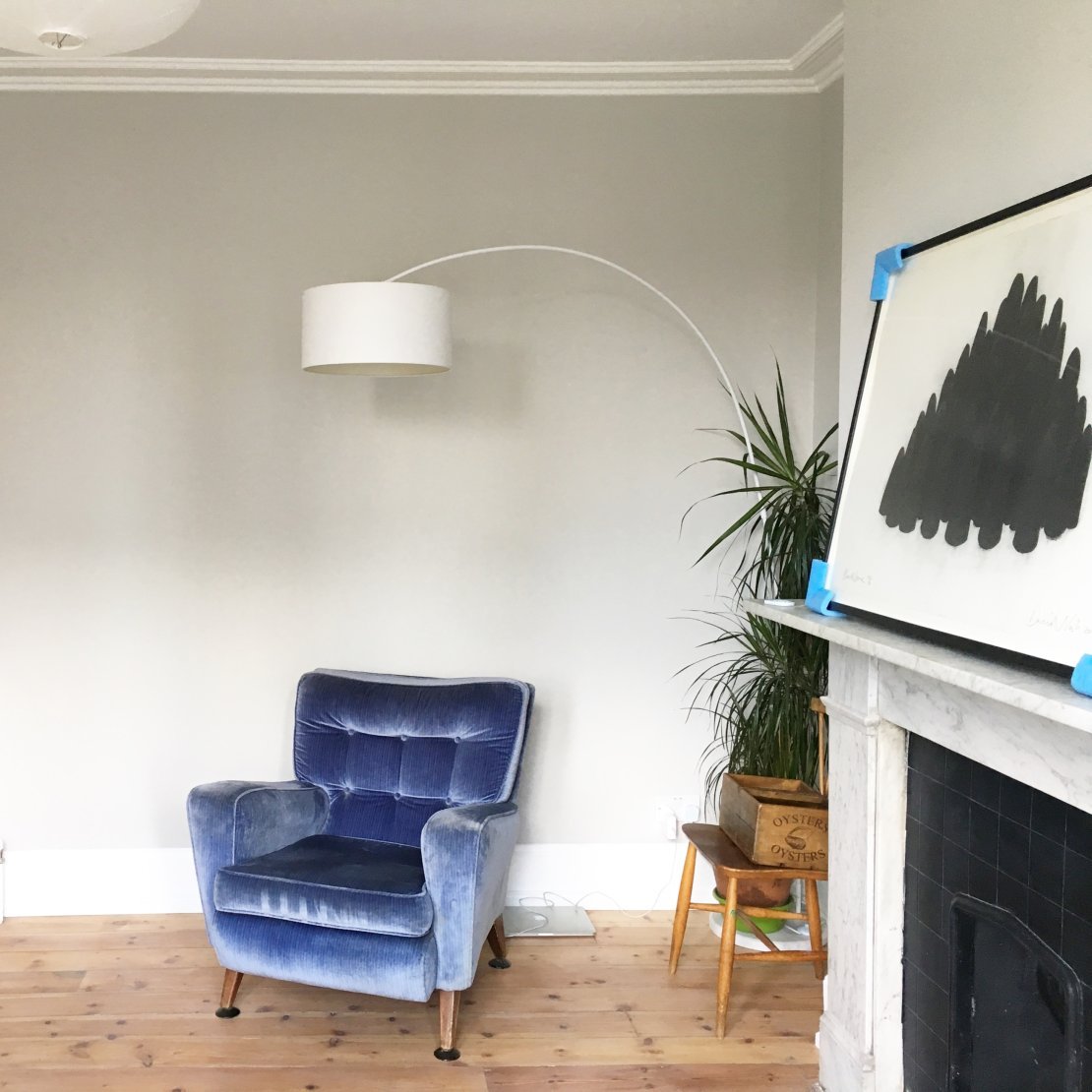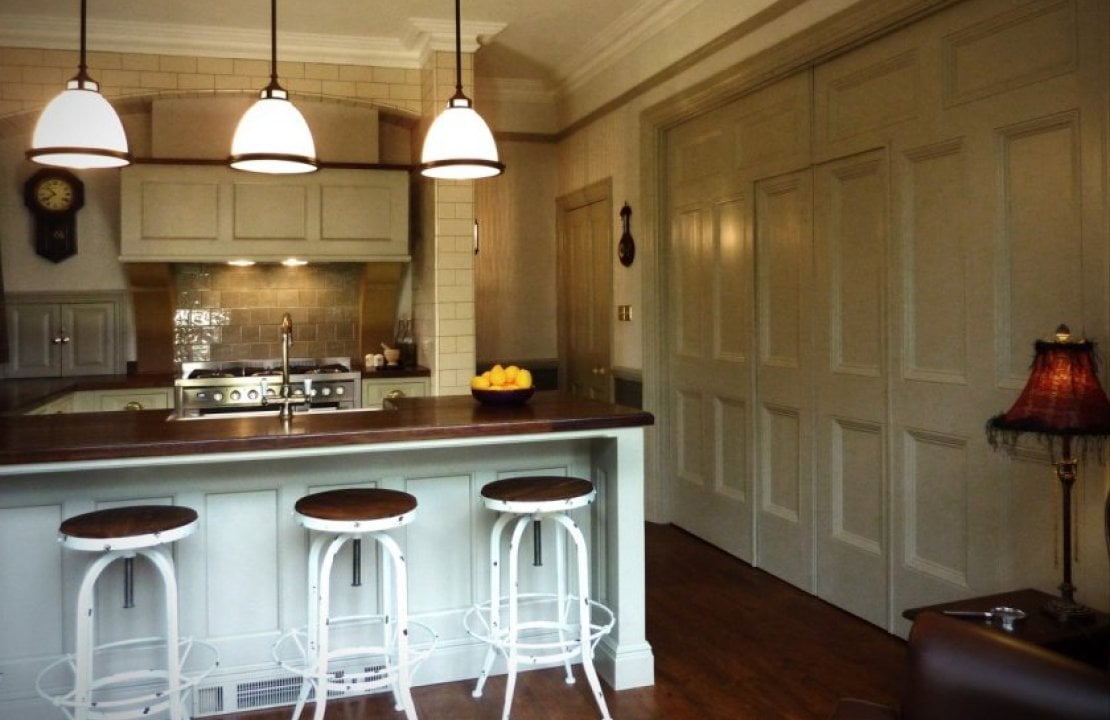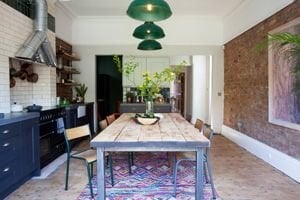Have you purchased a period house and are planning a restoration but don’t like the idea of living in a time warp? If so, here is our brief guide on how to restore your house with modern victorian interiors whilst also enjoying the original features of the house. This will help to complement the house without looking out of place or from the wrong architectural period.

It is possible to create a stunning modern interior whilst still respecting a property's history. However, it’s undeniable that getting the balance right results in design dilemmas such as: what should be kept or thrown away? What is original to the house and should be restored? What’s been added later? What do you do if you don’t actually like one of the original period features? And how do you deisgn a period family home which was originally built for people who bathed once a week, went to the toilet in an outside privy and slept 4 to a bed to keep warm?
What are your goals for the renovation?
Defining your goals for the renovation and always keeping them at the back of your mind will help you make the right decisions for the house. Your situation is likely to be one of the following and therefore the scenario will dictate your choices.
- You may be purchasing the house to do it up and sell it for maximum profit but will never live in it yourself. If so, think about who your target purchasers are and what they will be willing to pay a premium for and what won't add any extra value for them.
- You may be buying the house in order to rent it out and will be redecorating and making improvements in between tenants. Again, think about what will make it more rentable for a premium price and what will be expensive to do, but won’t be adding any rental value.
- You may be buying the house to live in yourself with your young family and need a house that is robust with no precious or expensive items that children might break or ruin. (Think Ikea furniture)
- On the other hand you may be a sophisticated adult wanting to create a dream period home with modern victorian interiors - no matter what the cost of the restoration or items as you will own them for the rest of your life and may decide that the house and it’s furnishings are worthy of a decent investment.
In all of the above scenarios, your renovation decisions are likely to differ due to cost, ease, speed, final usage of the house and it’s rooms etc. If your goals are always borne in mind, then the decisions should be easier to make.
Take care of your investment
The really important fact to realize is that period houses are bought and sold for a premium compared to their modern equivalents. That in itself says a lot about how much we as a nation love and value period property. For example, a three bed semi-detached Tudor house might sell for double the price a three bedroom semi-detached 1960s house with the same floor area and garden size within 200 metres of each other. A semi-detached Victorian property will come somewhere in between. There are a number of factors that influence this price – the two most important of them are rarity and beauty. So because a period property is a valuable asset, it’s important to take care of that asset and not devalue it. For example, bodged modern victorian interiors will definitely devalue it and also make it harder to sell when the time comes.
What period features does your house need?
People tend to buy period properties because they like period features. When you are restoring a period house, it’s important to understand what parts and features are original and which have been added later. It is the original features that need to be preserved and if they have been removed or replaced. If you are inexperienced in renovation projects and don’t know much about period-interiors, it may be difficult to tell what features may have been removed and which are original.
There are some really obvious modern additions to look out for such as upvc or aluminium windows, false beams, false ceilings, laminate flooring, 1960s fireplaces. These should all be removed without hesitation. But there are less obvious bad choices that may have been made, so it will be useful for you to do some research. Look at photographs of houses from the same era, or better still, go and visit them. National Trust or English Heritage properties are a good place to start as all of the original features are likely to have been preserved or restored. It’s true that your project will be on a much smaller scale than most of them, but even so, you can use what you find out as a learning process about your house and the year in which it was built.
The National Trust owns many modest properties compared to a normal family house as well as castles and manor houses. For example, Shaw’s Corner, country home of playwright George Bernard Shaw for 44 years; Ascott House, still inhabited by a Rothschild; The Red House, William Morris’ home; Monk’s House, Leonard and Virginia Woolf's 17th-century country retreat; and many others.
What should be period and what can be modern?
Once all of the period features have been restored or replaced and you have an understanding of the history of the property, your house will have become a blank canvas onto which you can put your mark in terms of furnishings, decoration and floor finishes. Anything not based on designs from the period of the house such as a fireplace, plaster or wooden mouldings, wallpaper, tiles, flooring and radiators ideally should not be used as they are expensive to remove and therefore any unwise choices could devalue the house.
But, if you wanted to choose a more contemporary light fitting, curtain fabric and furniture to complement the period features, you should do so as you can take these with you if you move. It is interesting to note that kitchens and bathrooms seem to be excluded from any rules being regarded as stand alone rooms. There’s nothing wrong with a super modern kitchen that also embraces period features such as plaster ceiling roses and coving. In fact, modern Victorian interiors can look rather fabulous. So, how period you go in these spaces is entirely up to you. You may wish to take this a step further as another factor that comes into play in how bold you can be about breaking the rules dependant on your location. A modern interior integrating some period features may well appeal to the young affluent London market but maybe not to folk in Cumbria.

Photo courtesy of Ross Perkin
Rules are made to be broken
There are some circumstances in which you might need to break some of these rules in order to achieve a good result in your renovation.
If you are converting a cellar which has a very low ceiling, recessed lighting might be the only practical lighting solution so that nobody bangs their head, even though it isn’t really the right choice for a period house.
Although Victorian cast iron radiators might be the perfect solution for your house, these are expensive. So, if you have budgetary constraints, use these in the public rooms only and use cheaper bog standard column radiators upstairs and in cloakrooms/playrooms etc.
If you have floorboards which cannot be restored, you can remove them and use new inexpensive pine tongue and groove with lots of wood stain and layers of varnish to replicate old pine or oak floorboards.
There are some generic pointers for furniture in period houses being given a contemporary feel:
- Furniture should be in proportion to the rooms – if you have massively high ceilings and generously proportioned rooms, use large sofas in bright colours. If the house is Tudor with low ceilings and beams, which can make rooms feel even smaller, choose smaller furniture.
- Lighting can make or break a room – you either need to choose period style interior lights or something ultra modern but extremely good quality and well designed.
- The only leather furniture truly fitting to a period house is Chesterfield or Chesterfield influenced in style be it wing chairs, sofas or footstools. Mid-century furniture, however, can add some sophisticated elegance and a welcome contrast.
- Hide your TV in a cabinet so that it does not dominate an otherwise beautiful period room.
- Velvet and other sumptuous fabrics are always a winner for both curtains and upholstery.
- Stick to a rich colour palette and avoid white, cream and pastels.
If you follow our advice you should end up with a beautiful house with an air of relaxed elegance without detracting or cheapening the restoration. Incorporating contemporary elements with sleek and stylish furnishings truly is the key to creating unique modern Victorian interiors.


Be the first to add a comment...